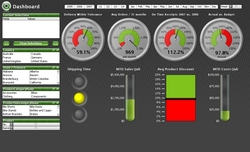Content

The total cost of the product may also be determined by adding these costs together. In traditional costing systems, the most common activities used as cost drivers are direct labor in dollars, direct labor in hours, or machine hours. Often in the production process, there is a correlation between an increase in the amount of direct labor used and an increase in the amount of manufacturing overhead incurred.

Indirect costs include administration, personnel and security costs. These are those costs which are not directly related to production. Some indirect costs may be overhead, but other overhead costs can be directly attributed to a project and are direct costs. Labor costs, also known as direct labor costs, Product Costs – Types of Costs and Examples refer to any funding given to workers who produce and build the products in question. Examples of labor include assembly line workers, machine operators and installation clerks. Indirect labor refers to individuals who are working for the company but have indirect roles in the manufacturing process.
Resources for Your Growing Business
Manufacturing overhead includes the indirect materials and indirect labor mentioned previously. Other manufacturing overhead items are factory building rent, maintenance and depreciation for production equipment, factory utilities, and quality control testing. Finally, managing product and period costs will help you establish more accurate pricing levels for your products. Similarly, lavender pens, which represent 1% of Plant II’s output, will have about 1% of the factory’s costs allocated to them.
- Information generated by an activity-based cost system can also encourage companies to redesign products to use more common parts.
- For example, if you own a small business that manufactures custom mugs, your variable cost per mug will increase as you produce more mugs.
- Instead, they are treated as period costs, as office rent or insurance would be.
- The Structured Query Language comprises several different data types that allow it to store different types of information…
Fixed costs remain constant regardless of changes in production or sales volume. Examples of variable expenses include materials and supplies used in production and direct labor wages paid to employees.
Accounting for Manufacturing Overhead
Examples include rent payable, utilities payable, insurance payable, salaries payable to office staff, office supplies, etc. The average total cost curve is U-shaped and is usually illustrated alongside the average fixed cost curve and average variable cost curve. We can illustrate the average fixed costs for each output level on an average fixed cost curve as in the figure below. At low output levels, the average costs are high because there are more average fixed and variable costs.
Response diversity as a sustainability strategy – Nature.com
Response diversity as a sustainability strategy.
Posted: Mon, 30 Jan 2023 16:06:42 GMT [source]
Accounting EquationsAccounting Equation is the primary accounting principle stating that a business’s total assets are equivalent to the sum of its liabilities & owner’s capital. This is also known as the Balance Sheet Equation & it forms the basis of the double-entry accounting system. The production department requires 500 grams (or 0.5 kg) of fabric to manufacture a single shirt. Are the salaries, wages, and benefits paid to these labor forces against their services. Prevention cost is the cost incurred to reduce the appraisal cost to a minimum.
Sunk Costs- types of costs
If the sale price is equal, it is a break-even situation, i.e., no profit or loss, and the sales price covers the cost per unit. On the other hand, a sales price higher than the cost per unit results in gains.
These may be costs for management, insurance, taxes, or maintenance, for example. Indirect costs are those for activities or services that benefit more than one project. Their precise benefits to a specific project are often difficult or impossible to trace. For example, it may be difficult to determine precisely how the activities of the director https://online-accounting.net/ of an organization benefit a specific project. Indirect costs do not vary substantially within certain production volumes or other indicators of activity, and so they may sometimes be considered to be fixed costs. Rule 1 leads us to resource categories where the new costing process has the potential to make big differences in product costs.
Company
Product costs, also known as direct costs or inventoriable costs, are directly related to production output and are used to calculate the cost of goods sold. Understanding the difference between direct costs and indirect costs is a critical aspect of proper accounting. Tracking each type of cost separately can help small businesses understand their cash flow, price their items properly and attain the maximum allowable tax deductions. If you need assistance with breaking down your business’s expenses, contact a professional accountant or choose accounting software that can support your business. Indirect costs include supplies, utilities, office equipment rental, desktop computers and cell phones.
What are the 4 types of product?
There are four types of products and each is classified based on consumer habits, price, and product characteristics: convenience goods, shopping goods, specialty products, and unsought goods.
